Swing Trading Concepts To Know In Trading with Smart Money Concepts
2025-10-15 10:32:20
There’s a moment in every trader’s journey when technical mastery stops being enough.
You’ve learned to draw levels, label structure, and wait for confirmation. Yet the market still feels one step ahead. What’s missing is the why behind the when - the macro wind that powers your technical sail, the intermarket currents that tug on your pair, the footprints of bigger players that quietly position days before the headline hits. This chapter is where we stitch those pieces together so you stop reacting to candles and start anticipating the move like a pro.
1. Combining Fundamentals with Technicals: Let the Wind Power the Sail

Every clean break of structure you love to trade is usually born from a policy shift, a repricing in rates, or a rotation in risk. Start your week with the story, then let the chart tell you when to act. If the policy narrative points toward easier conditions, yields often soften and the dollar eases - a context where risk assets breathe. That top-down scan does not require a PhD; it’s as simple as asking: what are central banks signaling and how is inflation evolving?
When you understand the institutional logic of liquidity and repricing, your technical signals become far more selective. If this is still fuzzy, walk through why liquidity and price often behave the way they do in Why Smart Money Concepts Work, then pair that with a light macro primer on how policy sets the tone in Central Banks and Interest Rates and how inflation data steers the week in Inflation & Economic Data: CPI and PPI.
With the wind mapped, you can let the sail do its work. A daily higher-high and a clean H4 fair value gap is compelling on its own; it becomes convincing if the dollar is softening and yields are rolling. That’s the difference between chasing patterns and aligning with a narrative.
2. Institutional Order Flow for Swing Traders: Reading Footprints, Not Just Patterns
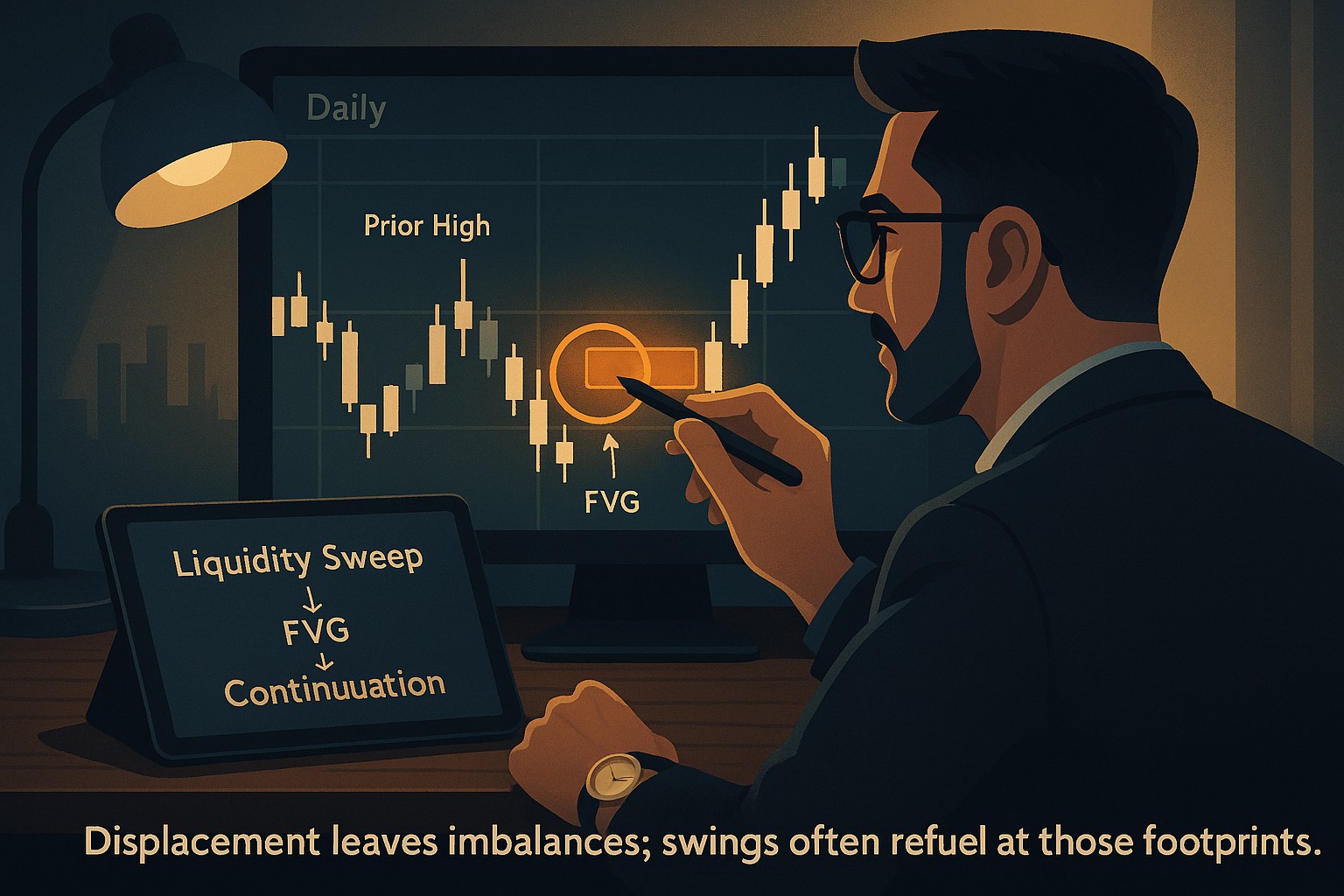
Retail eyes see a rally, a dip, and a continuation. Institutional eyes see accumulation, a liquidity sweep to reload, and a marked-up leg. You don’t need to predict; you need to recognize where the big orders likely live.
Anchor your swing read on three tells:
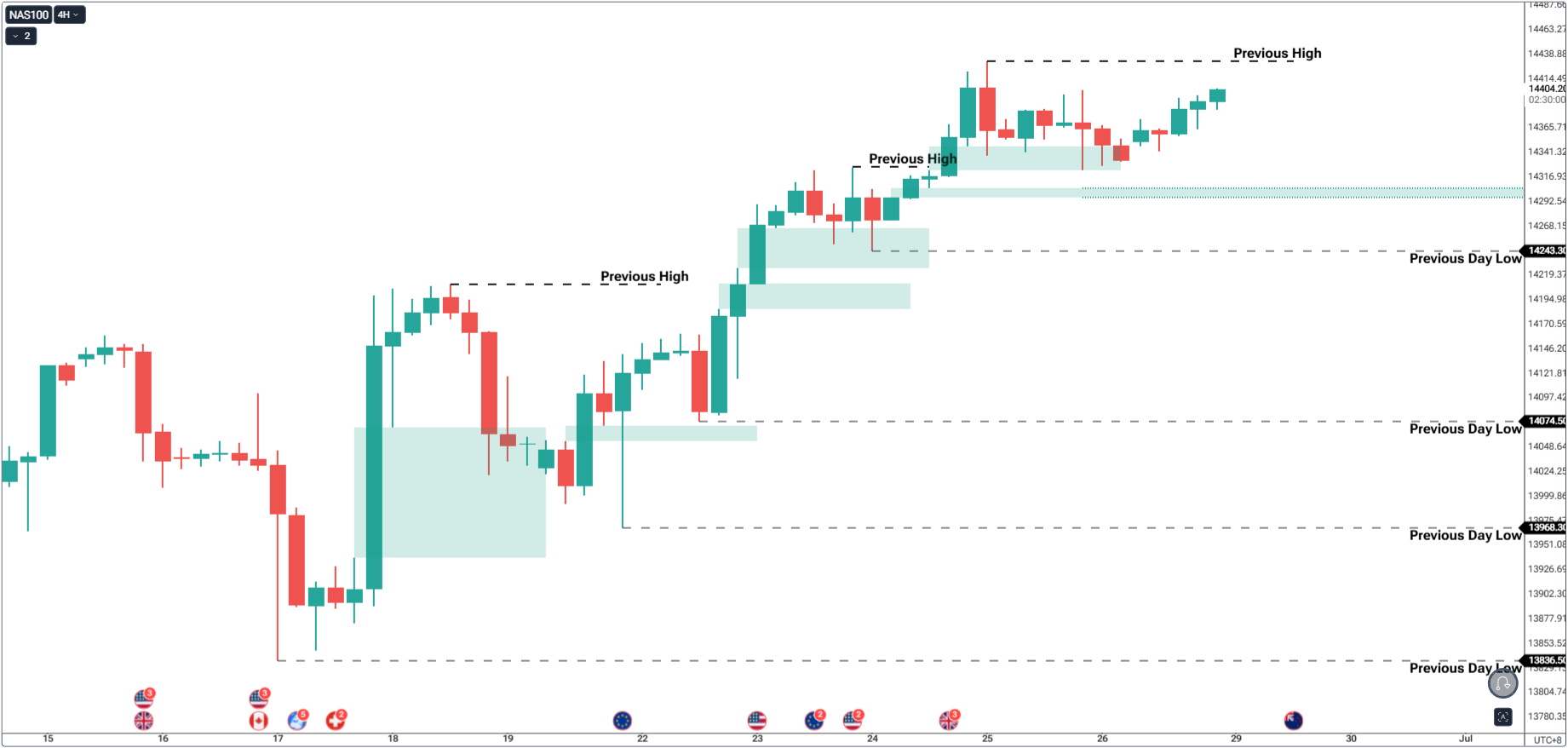
- Displacement on higher timeframes (H4 or Daily) that signals real capital flow, not noise.
- Imbalances to revisit - the fair value gaps formed during that displacement.
- Recent pools of resting orders - prior highs and lows, session extremes, or obvious swing points.
If you’ve ever watched price poke above a weekly high, flush back into a daily imbalance, then expand in trend, you’ve seen the play. For a tight lens on the mechanics, revisit Fair Value Gaps Explained and sharpen your read on where size tends to transact with Institutional Order Flow. Add the missing puzzle piece - why the sweep happens first - with Understanding Liquidity Sweep so you stop mistaking preparation for reversal.
You’ll notice something else: swing setups often precede big data. Smart money builds quietly, then lets the catalyst finish the job.
3. Correlation & Intermarket Analysis: See the Web, Not Just a Thread

No market moves alone. The fastest way to upgrade your swing bias is to listen to the chorus, not a soloist.
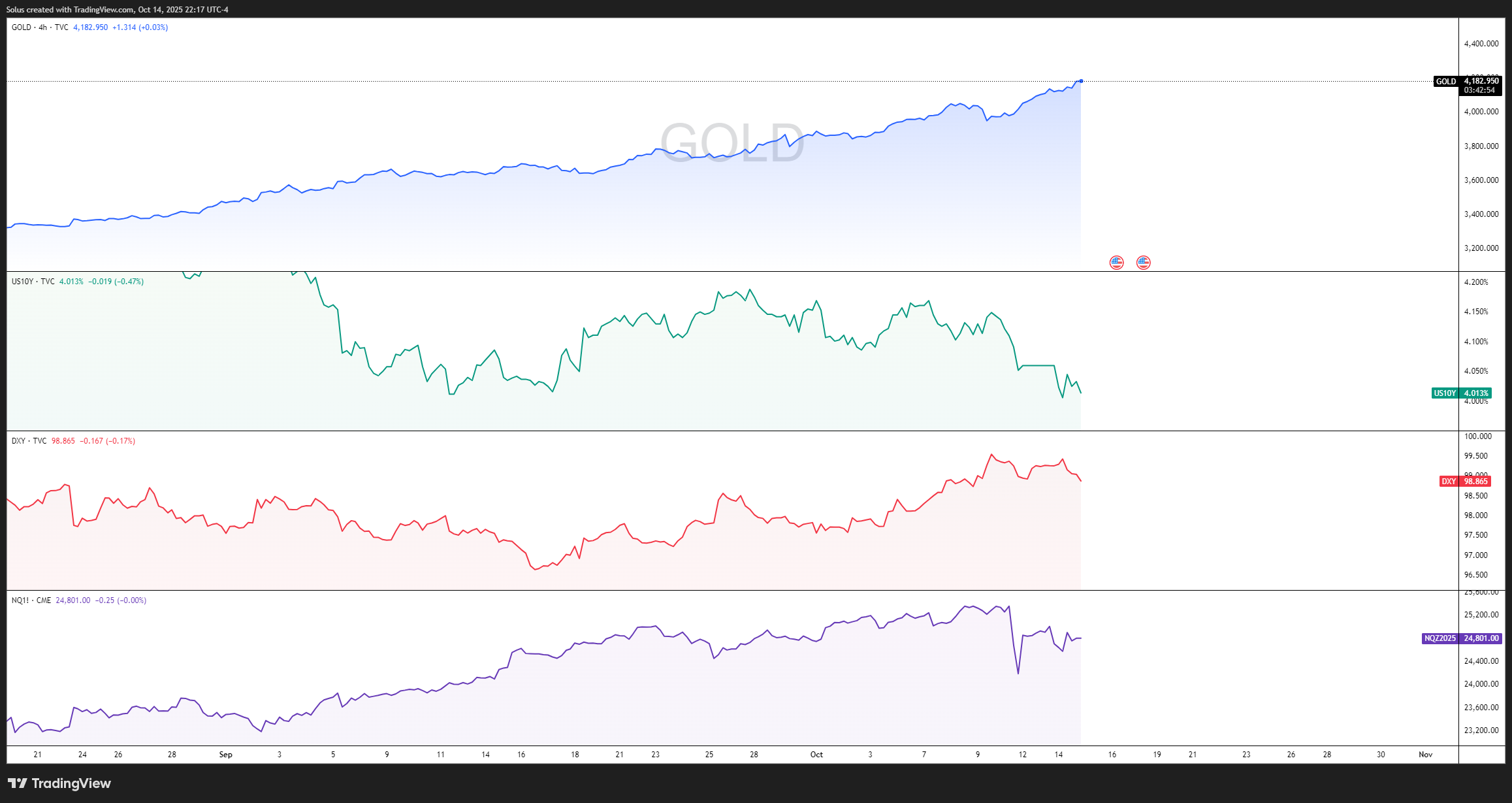
- DXY vs Gold often sings an inverse duet. A softer dollar pairs naturally with firmer metals.
- Yields vs Indices give you the risk thermostat. Falling yields frequently relieve pressure on growth equities.
- Gold vs Nasdaq can rise together when real yields compress, hinting at a broader risk-on undercurrent.
If you want a practical walk-through of how these relationships show up on a tradable chart, skim the rotation logic and execution flow in Market Correlations & Intermarket Analysis for Traders. And because gold is often first to twitch when real yields bend, study its structure and trigger logic in Complete Step-by-Step Guide to Day Trading Gold (SMC) - even as a swing trader, the confirmation signals and confluence checks translate beautifully.
Indices deserve their own lens, too. If your bias leans risk-on, it helps to know which indices breathe easiest under that regime. For a quick framing on where and when to focus, see Best Indices to Trade for Day Traders and adapt the timing insights to your swing plan.
4. Using the Economic Calendar for Swing Bias: From Guesswork to Game Plan
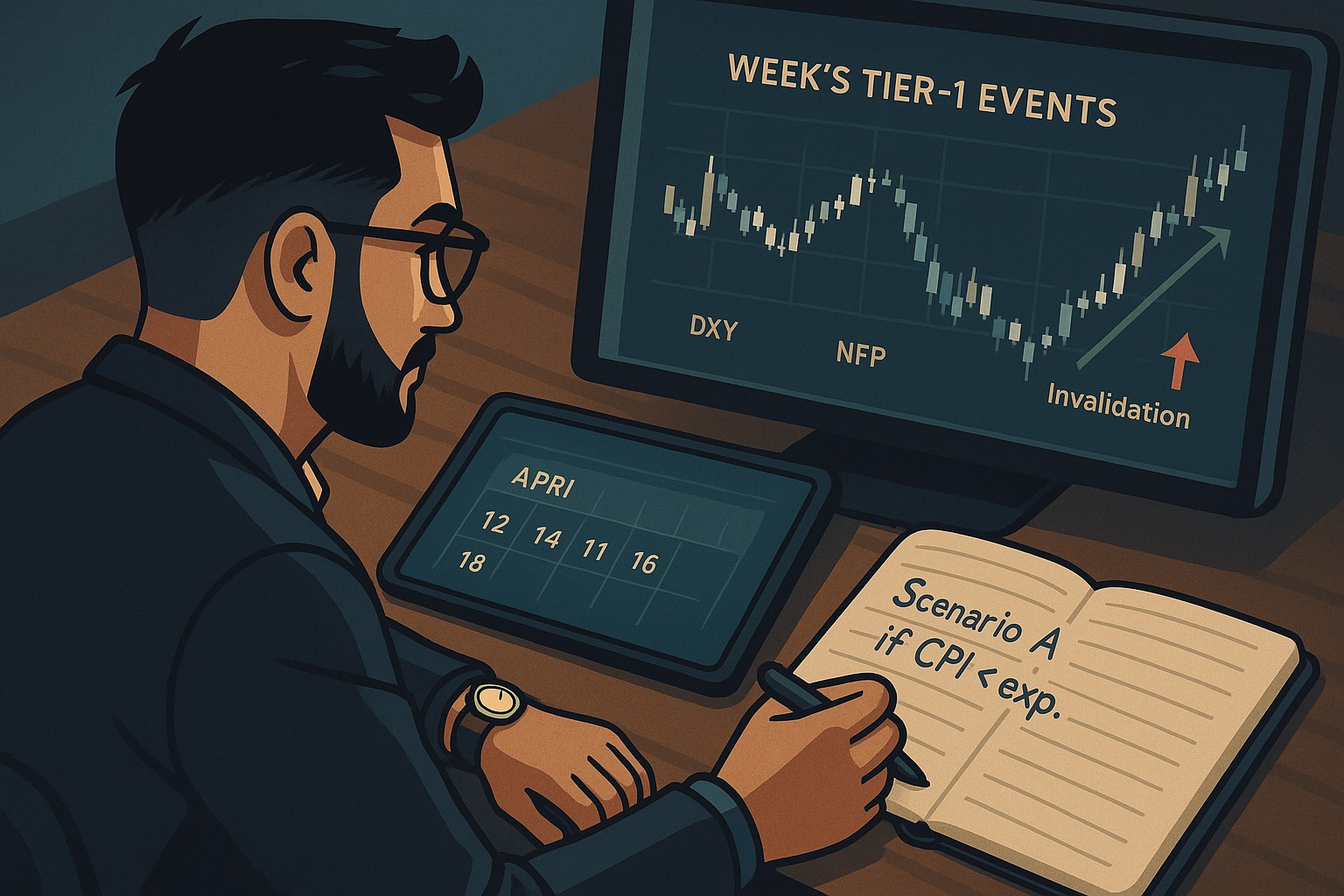
The calendar is not a list of hazards. It is your map for when liquidity expands, narratives flip, and algorithms care. Treat it like radar:
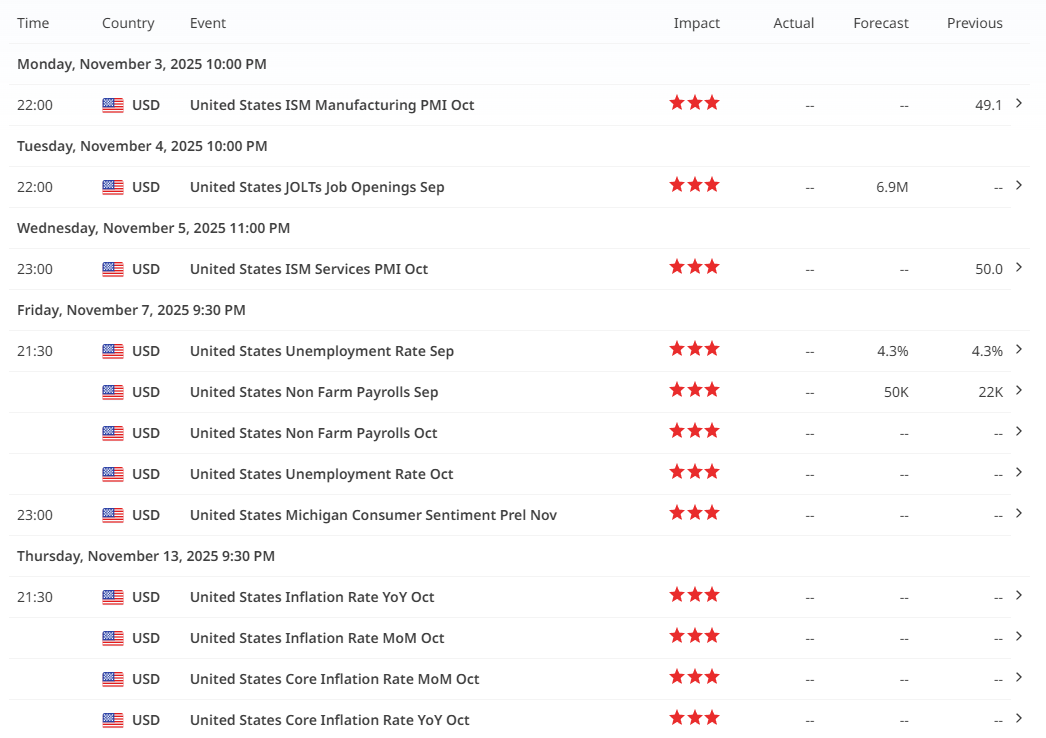
- Sunday: mark Tier-1 events and sketch the likely narrative path if the numbers land as expected vs surprise.
- Monday: align zones and triggers with that path.
- Midweek: read positioning before the print - footprints often show up as controlled drifts into key levels.
- Friday: review reactions to set next week’s bias.
If you’re repeatedly caught off-guard by the print, don’t try to predict the number. Learn to trade the interpretation. Two concise playbooks help here: How to Trade CPI Like Smart Money and How to Trade NFP Using SMC. They’ll show you how to plan scenarios, mark invalidations, and let the first reaction guide your execution rather than fighting it.
A Real-Life Analogy: The Pilot’s Flight Plan
A skilled pilot doesn’t take off because the runway looks clear. They read the weather, file a flight plan, check jet streams, and choose an altitude that saves fuel and time. Your fundamentals are the weather system, your correlations are the jet streams, and your technicals are the precise throttle and flaps. Fly blind and you can still get airborne; fly with a plan and you actually reach the destination.
Bringing It Together: From Chart Reader to Market Interpreter

At this level, charts are not your starting point. They’re your final filter. You begin with:
- Policy tone softening or firming.
- Yields compressing or expanding.
- Dollar posture and what that implies for metals and indices.
Then, you translate that into structure:
- Daily displacement aligns with the macro wind.
- Liquidity above last week’s high gets swept, leaving a clean H4 imbalance.
- A measured pullback offers entry, with invalidation tucked behind the sweep.
Finally, you protect the base. It’s impossible to talk about advanced execution without a plan to survive bad sequences. If your edge is real, it will show in the equity curve only if risk is capped and gains are allowed to breathe. To tighten that layer, bookmark The Ultimate Guide to Risk Management in Trading. The ideas are not flashy, but they are what keep you in the game long enough for the flashy parts to matter.
Final Thoughts

Advanced swing trading is not clairvoyance. It is context plus confluence, repeated with discipline. When the macro wind, intermarket current, and order-flow footprints all point one way, your technical trigger is no longer a coin flip - it’s a well-timed push with the tide. That’s how you trade fewer setups with more conviction, sit through noise with more calm, and measure progress by consistency rather than luck.
FAQs
How do I blend macro with my chart without overcomplicating it?
Start with a single driver for the week - policy tone or inflation trend - and ask what that likely means for DXY and yields. If those align, only then look for your H4 or Daily trigger.
Why does institutional order flow matter for swings?
Because large players build positions across days and weeks. Their displacement and the imbalances they leave behind give you a logical map for pullbacks and continuations.
Which correlations should I check first?
Begin with DXY, 10-year yields, gold, and a major index like Nasdaq or the S&P 500. If three of those agree, you likely have the dominant theme.
How do I use the calendar without gambling on the number?
Plan both outcomes, define invalidation, and let the first post-print reaction choose the path. Execute only if your pre-marked level and the market’s reaction agree.
Start Practicing with Confidence - Risk-Free!
- Trade forex, indices, gold, and more
- Access ACY, MT4, MT5, & Copy Trading Platforms
- Practice with zero risk
It’s time to go from theory to execution - risk-free.
Create an Account. Start Your Free Demo!
Check Out My Contents:
Strategies That You Can Use
Looking for step-by-step approaches you can plug straight into the charts? Start here:
- How To Trade & Scalp Indices at the Open Using Smart Money Concepts (SMC)
- How to Trade Breakouts Effectively in Day Trading with Smart Money Concepts
- Complete Step-by-Step Guide to Day Trading Gold (XAU/USD) with Smart Money Concepts (SMC)
- The Power of Multi-Timeframe Analysis in Smart Money Concepts (SMC)
- Forex Trading Strategy for Beginners
- Mastering Candlestick Pattern Analysis with the SMC Strategy for Day Trading
- How to Use Fibonacci to Set Targets & Stops (Complete Guide)
- RSI Divergence Trading Strategy for Gold: How to Identify and Trade Trend Reversals
- Stochastics Trading Secrets: How to Time Entries in Trending Markets using Stochastics
- Gold Trading Stochastics Strategy: How to Trade Gold with 2R - 3R Targets
- RSI Hidden Divergence Explained: How to Spot Trend Continuations Like a Pro
- Moving Averages Trading Strategy Playbook
- Mastering Fibonacci Trading Psychology - Trusting the Levels, Managing the Mind
- Mastering Price Action at Key Levels - How to Spot, Trade, and Win at the Most Crucial Zones
- Mastering Retests: How to Enter with Confirmation After a Breakout
Indicators / Tools for Trading
Sharpen your edge with proven tools and frameworks:
- The Ultimate Guide to Risk Management in Trading - A Complete Compilation for 2025
- Moving Averages Trading Strategy Playbook
- How to Think Like a Price Action Trader
- Mastering Fibonacci Trading Psychology - Trusting the Levels, Managing the Mind
How To Trade News
News moves markets fast. Learn how to keep pace with SMC-based playbooks:
- Why Smart Money Concepts Work in News-Driven Markets - CPI, NFP, and More
- How to Trade NFP Using Smart Money Concepts (SMC)-A Proven Strategy for Forex Traders
- How to Trade CPI Like Smart Money - A Step-by-Step Guide Using SMC
Learn How to Trade US Indices
From NASDAQ opens to DAX trends, here’s how to approach indices like a pro:
- How to Start Trading Indices and Get into the Stock Market with Low Capital (2025 Guide)
- Best Indices to Trade for Day Traders | NASDAQ, S&P 500, DAX + Best Times to Trade Them
- How To Trade & Scalp Indices at the Open Using Smart Money Concepts (SMC)
- NAS100 - How to Trade the Nasdaq Like a Pro (Smart Money Edition)
How to Start Trading Gold
Gold remains one of the most traded assets - - here’s how to approach it with confidence:
- How to Swing Trade Gold (XAU/USD) Using Smart Money Concepts: A Simple Guide for Traders
- Complete Step-by-Step Guide to Day Trading Gold (XAU/USD) with Smart Money Concepts (SMC)
- The Ultimate Guide to Backtesting and Trading Gold (XAU/USD) Using Smart Money Concepts (SMC)
- Why Gold Remains the Ultimate Security in a Shifting World
- How to Exit & Take Profits in Trading Gold Like a Pro: Using RSI, Range Breakdowns, and MAs as Your Confluence
How to Trade Japanese Candlesticks
Candlesticks are the building blocks of price action. Master the most powerful ones:
- Mastering the Top Japanese Candlesticks: The Top 5 Candlesticks To Trade + Top SMC Candlestick Pattern
- How to Trade Candlestick Patterns with High Probability: A Complete Guide for Beginners
- The Top Japanese Candlestick Guide: What is an Engulfing Pattern and How to Trade It?
- Piercing Pattern Candlestick Explained: How to Trade It - Step-By-Step Guide
- Morning & Evening Star Candlestick Patterns - How to Trade Market Reversals with Confidence
How to Start Day Trading
Ready to go intraday? Here’s how to build consistency step by step:
- 5 Steps to Start Day Trading: A Strategic Guide for Beginners
- 8 Steps How to Start Forex Day Trading in 2025: A Beginner’s Step-by-Step Guide
- 3 Steps to Build a Trading Routine for Consistency and Discipline - Day Trading Edition
- The Ultimate Guide to Understanding Market Trends and Price Action
- Trading with Momentum: The Best Trading Session to Trade Forex, Gold and Indices
Learn how to navigate yourself in times of turmoil
Markets swing between calm and chaos. Learn to read risk-on vs risk-off like a pro:
- How to Identify Risk-On and Risk-Off Market Sentiment: A Complete Trader’s Guide
- How to Trade Risk-On and Risk-Off Sentiment - With Technical Confirmation
- The Ultimate Guide to Understanding Market Trends and Price Action
Want to learn how to trade like the Smart Money?
Step inside the playbook of institutional traders with SMC concepts explained:
- Why Smart Money Concepts Work: The Truth Behind Liquidity and Price Action
- Mastering the Market with Smart Money Concepts: 5 Strategic Approaches
- Understanding Liquidity Sweep: How Smart Money Trades Liquidity Zones in Forex, Gold, US Indices
- The SMC Playbook Series Part 1: What Moves the Markets? Key Drivers Behind Forex, Gold & Stock Indices
- The SMC Playbook Series Part 2: How to Spot Liquidity Pools in Trading-Internal vs External Liquidity Explained
- Fair Value Gaps Explained: How Smart Money Leaves Footprints in the Market
- Accumulation, Manipulation, Distribution: The Hidden Cycle That Runs Every Market
- Institutional Order Flow - Reading the Market Through the Eyes of the Big Players
- London Session Trading Secrets: How Smart Money Sets the High & Low of the Day
- Mastering the New York Session - Smart Money Concepts Guide
Master the World’s Most Popular Forex Pairs
Forex pairs aren’t created equal - - some are stable, some are volatile, others tied to commodities or sessions.
- The Top 5 All-Time Best Forex Pairs to Trade
- Top Forex Pairs Beyond the Big Five
- EUR/USD: The King of Forex
- USD/JPY: The Fast Mover
- GBP/USD: The Volatile Cable
- AUD/USD: The Commodity Currency
- USD/CAD: The Oil-Backed Pair
- GBP/JPY: How to Trade The Beast
- Asian & London Session Secrets
- Mastering the New York Session
Stop Hunting 101
If you’ve ever been stopped out right before the market reverses - - this is why:
- Stop Hunting 101: How Swing Highs and Lows Become Liquidity Traps
- Outsmarting Stop Hunts: The Psychology Behind the Trap
- How to Lessen Risk From Stop Hunts in Trading
- How Stop Hunts Trigger Revenge Trading - Breaking the Pain Cycle
- How to Accept Stop Hunts Without Losing Discipline - Shifting From Frustration to Focus
Trading Psychology
Mindset is the deciding factor between growth and blowups. Explore these essentials:
- The Mental Game of Execution - Debunking the Common Trading Psychology
- Managing Trading Losses: Why You Can Be Wrong and Still Win Big in Trading
- The Hidden Threat in Trading: How Performance Anxiety Sabotages Your Edge
- Why 90% of Retail Traders Fail Even with Profitable Trading Strategies
- Top 10 Habits Profitable Traders Follow Daily to Stay Consistent
- Top 10 Trading Rules of the Most Successful Traders
- Top 10 Ways to Prevent Emotional Trading and Stay Disciplined in the Markets
- Why Most Traders Fail - Trading Psychology & The Hidden Mental Game
- Emotional Awareness in Trading - Naming Your Triggers
- Discipline vs. Impulse in Trading - Step-by Step Guide How to Build Control
- Trading Journal & Reflection - The Trader’s Mirror
- Overcoming FOMO & Revenge Trading in Forex - Why Patience Pays
- Risk of Ruin in Trading - Respect the Math of Survival
- Identity-Based Trading: Become Your Trading System for Consistency
- Trading Psychology: Aligning Emotions with Your System
- Mastering Fear in Trading: Turn Doubt into a Protective Signal
- Mastering Greed in Trading: Turn Ambition into Controlled Growth
- Mastering Boredom in Trading: From Restless Clicking to Patient Precision
- Mastering Doubt in Trading: Building Confidence Through Backtesting and Pattern Recognition
- Mastering Impatience in Trading: Turn Patience Into Profit
- Mastering Frustration in Trading: Turning Losses Into Lessons
- Mastering Hope in Trading: Replacing Denial With Discipline
- When to Quit on Trading - Read This!
- The Math of Compounding in Trading
- Why Daily Wins Matter More Than Big Wins
- Scaling in Trading: When & How to Increase Lot Sizes
- Why Patience in Trading Fuels the Compounding Growth
- Step-by-Step Guide on How to Manage Losses for Compounding Growth
- The Daily Habits of Profitable Traders: Building Your Compounding Routine
- Trading Edge: Definition, Misconceptions & Casino Analogy
- Finding Your Edge: From Chaos to Clarity
- Proving Your Edge: Backtesting Without Bias
- Forward Testing in Trading: How to Prove Your Edge Live
- Measuring Your Edge: Metrics That Matter
- Refining Your Edge: Iteration Without Overfitting
- The EDGE Framework: Knowing When and How to Evolve as a Trader
- Scaling Your Edge: From Small Account to Consistency
Market Drivers
- Central Banks and Interest Rates: How They Move Your Trades
- Inflation & Economic Data: CPI Trading Strategy and PPI Indicator Guide
- Geopolitical Risks & Safe Havens in Trading (Gold, USD, JPY, CHF)
- Jobs, Growth & Recession Fears: NFP, GDP & Unemployment in Trading
- Commodities & Global Trade: Oil, Gold, and Forex Explained
- Market Correlations & Intermarket Analysis for Traders
Swing Trading 101
- Introduction to Swing Trading
- The Market Basics for Swing Trading
- Core Principles of Swing Trading
- The Technical Foundations Every Swing Trader Must Master
- Swing Trader’s Toolkit: Multi-Timeframe & Institutional Confluence
- The Psychology of Risk Management in Swing Trading
Risk Management
The real edge in trading isn’t strategy - it’s how you protect your capital:
- Mastering Risk Management: Stop Loss, Take Profit, and Position Sizing
- Why Risk Management Is the Only Edge That Lasts
- How Much Should You Risk per Trade? (1%, 2%, or Less?)
- The Ultimate Risk Management Plan for Prop Firm Traders - Updated 2025
- Mastering Position Sizing: Automate or Calculate Your Risk Like a Pro
- Martingale Strategy in Trading: Compounding Power or Double-Edged Sword?
- How to Add to Winners Using Cost Averaging and Martingale Principle with Price Confirmation
Suggested Learning Path
If you’re not sure where to start, follow this roadmap:
- Start with Trading Psychology → Build the mindset first.
- Move into Risk Management → Learn how to protect capital.
- Explore Strategies & Tools → Candlesticks, Fibonacci, MAs, Indicators.
- Apply to Assets → Gold, Indices, Forex sessions.
- Advance to Smart Money Concepts (SMC) → Learn how institutions trade.
- Specialize → Stop Hunts, News Trading, Turmoil Navigation.
This way, you’ll grow from foundation → application → mastery, instead of jumping around randomly.
Follow me for more daily market insights!
Jasper Osita - LinkedIn - FXStreet - YouTube
This content may have been written by a third party. ACY makes no representation or warranty and assumes no liability as to the accuracy or completeness of the information provided, nor any loss arising from any investment based on a recommendation, forecast or other information supplies by any third-party. This content is information only, and does not constitute financial, investment or other advice on which you can rely.
Try These Next
4 Powerful Tactics to Overcome the Most Costly Forex Mistakes
How to Master MT4 & MT5 - Tips and Tricks for Traders
The Importance of Fundamental Analysis in Forex Trading
Forex Leverage Explained: Mastering Forex Leverage in Trading & Controlling Margin
The Importance of Liquidity in Forex: A Beginner's Guide
Close All Metatrader Script: Maximise Your Trading Efficiency and Reduce Stress
Best Currency Pairs To Trade in 2025
Forex Trading Hours: Finding the Best Times to Trade FX
MetaTrader Expert Advisor - The Benefits of Algorithmic Trading and Forex EAs
Top 5 Candlestick Trading Formations Every Trader Must Know















